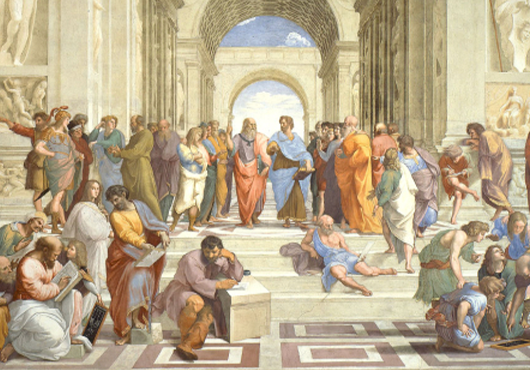Life is filled with danger and uncertainty, and it is a daily struggle to hold on to and advance the things that matter most to us. Distinguished psychiatrist and medical anthropologist Arthur Kleinman explores this difficulty in his most recent book, What Really Matters: Living a Moral Life Amidst Uncertainty and Danger. Through the interwoven narration of stories and personal experiences, Kleinman renders in plain language the breadth and frailty of human experience. Each of the seven chapters introduces a different character to the reader, each impaired by a unique combination of illness and traumatic injury that serve as backgrounds for the moral crises of how to respond. Kleinman admits that he learned through these stories, and likewise, we can also learn what it means to live a moral life, both as a shared experience and as an individual one. And finally, Kleinman takes an inventory of medicine and identifies areas where the profession has been insensitive to the moral and social contours of care. What Really Matters is full of worldly wisdom and has a number of applications that extend beyond illness and medicine.
Patients, research participants, and personal mentors all make appearances in What Really Matters, but one story stands out from the others. Kleinman retells the history of physician and anthropologist W. H. R. Rivers, who is best known for having treated poet Siegfried Sassoon during World War I. While his fieldwork earned an estimable reputation in medicine and anthropology prior to the war, Rivers returned to clinical medicine as a volunteer in the First World War. Here, Rivers cared for a deeply afflicted and tragically conflicted Siegfried Sassoon. Although Sassoon was initially diagnosed with shell-shock syndrome, Rivers eventually realized Sassoon was suffering instead from a repressed homosexual desire. Hated by society for his sexual orientation, Sassoon spiraled into a form of guilt and self-martyrdom. Instead of following traditional methods, Rivers imagined his care of Sassoon as a “kind of protective psychotherapy…aimed instead to enable Sassoon and others to gently and slowly rebuild shattered emotions and heal broken self-images.” [1] Here Kleinman introduces a new term to describe what Rivers treated: a moral disorder.
A moral disorder is a conflict between the moral life of the individual and our shared moral experience. In other words, individuals follow a moral code or set of values that helps guide them in the art of living. However, individuals following one moral code may encounter others following other codes—those from other locales or subscribing to differing worldviews, potentially challenging what we define as “good” or “bad.” Such definitions may change, depending on different settings of moral experience. Kleinman argues that this reality creates uncertainty and danger in our lives and forces us to navigate this conflict through contestations and compromises. How people navigate danger and uncertainty, Kleinman indicates, is telling of what it means to be human and what really matters to us. This framework has implications for medicine and beyond.
Kleinman believes that modern medicine has much to learn from Rivers. Stylized as his alter ego, Kleinman praises Rivers and his ability to recognize that “self-knowledge must be about not only one’s psychological state but also one’s social and political position.” According to Rivers, therapeutic treatment can be reimagined as an anthropological expedition where sources of pathology are embedded within the moral, medical, and political spheres. This makes intervention not just about medication, but also remoralization—the process of creating a finer and better “image of what the world is like or could be like.” [1] And yet, modern medicine has arguably created a “superficial and soulless model of the person” [2] that fails to recognize illness and medicine as moral projects. To leave this practice unchecked will eventually diminish the richness of human experience, and thus ultimately what matters most to us. Kleinman asks his readers, and the medical profession, to help reverse this process.
We need to ask the same of bioethics. Where modern medicine has homogenized the person, bioethics has homogenized a field of inquiry rich in complexity and diversity. For decades, moral philosophers have dominated bioethics. However, other disciplines are making headway in raising new questions and finding new answers to age-old questions. For example, narrative ethics has focused less on principles, rules, or law and instead prioritizes questions about moral agency, context, and values. With a different point of view, narrative ethics and other disciplines can help ethicists grasp new truths about the moral life. However, to ignore these other disciplines will leave bioethics shortsighted and unable to discern what matters to ordinary people.
What Really Matters has tremendous worth as a narrative work. The book is an excellent resource for any ethicist and a brilliant demonstration of the value of narrative as a form of argument. A number of applications extend beyond illness and medicine, which further strengthens the text. Kleinman is a master ethnographer, able to layer detail and nuance, to convey life’s necessarily moral dimensions in plain language. As Kleinman did while writing it, What Really Matters invites us to investigate the existential structure of our lives, and meaning within them.
[1] Kleinman, Arthur. What Really Matters: Living a Moral Life Amidst Uncertainty and Danger (New York: Oxford University Press, 2007).
[2] Kleinman, Arthur. "What Really Matters: Living a Moral Life Amidst Uncertainty and Danger." Book Presentation, Contemporary Authors in Bioethics at Harvard Medical School Center for Bioethics, Boston, MA, September 28, 2017.


